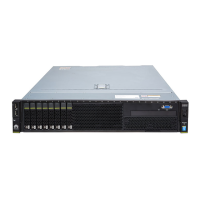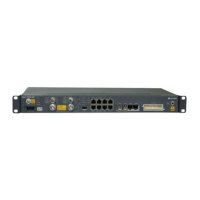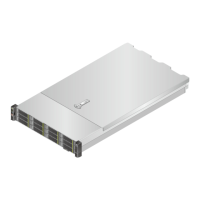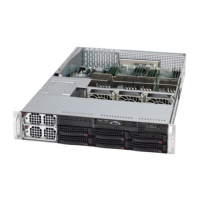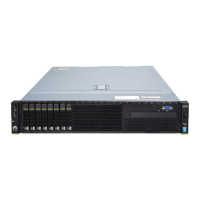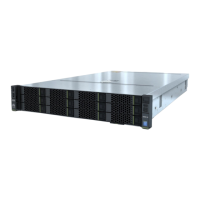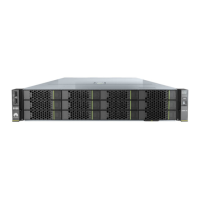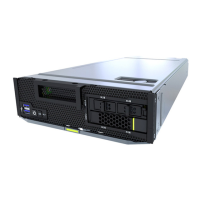Step 2 View system alarms and events.
1. On the menu bar of the iBMC WebUI, choose Alarm & SEL.
2. In the navigation tree, choose Current Alarms to view current alarms.
3. In the navigation tree, choose System Events to view system events.
Step 3 View the status of hardware, including drives, DIMMs, and sensors.
1. On the menu bar of the iBMC WebUI, choose Information.
2. In the navigation tree, choose System Info. On the right panel, click the
Storage tab and view hardware status information.
3. In the navigation tree, choose Real-Time Monitoring to view the CPU usage,
memory usage, and air intake vent temperature.
– The RH5885 V3, RH5885H V3, and RH8100 V3 do not support display of the CPU
usage and memory usage.
– After iBMA 2.0 is installed and started on the server OS, the CPU usage is obtained
from the iBMA 2.0 and the CPU usage data is the same as the data collected on
the OS.
– If iBMA 2.0 is not installed on the server OS or iBMA 2.0 has not completely
started, the CPU usage data is obtained from the Intel Management Engine (ME).
The CPU usage is the average compute usage per second of all CPU cores
calculated by the CPU internal module.
– If iBMA 2.0 is not installed on the server OS, obtain the latest iBMA user guide and
software package, and install iBMA 2.0 by referring to the user guide.
4. In the navigation tree, choose Sensor Info to view the status of sensors.
----End
Procedure 2 (For iBMC V561 and Later or iBMC V3.01.00.00 and Later)
Step 1 Log in to the iBMC WebUI. For details, see 8.9 Logging In to the iBMC WebUI.
Step 2 View system alarms and events.
1. In the navigation tree, choose Maintenance > Alarm & SEL.
2. Click the Current Alarms tab to view the current alarms.
3. Click the System Events tab to view the system events.
Step 3 View the status of hardware, including drives, DIMMs, and sensors.
1. In the navigation tree, choose System > System Info. Click Memory to view
the detailed memory information.
2. In the navigation tree, choose System > System Info. Click Sensors Info to
view the sensor status.
3. In the navigation tree, choose System > Storage Management to view the
status of hardware such as system drive.
4. In the navigation tree, choose System > Performance Monitoring to view the
CPU usage, memory usage, and drive usage.
----End
Huawei Servers
Troubleshooting 7 Preventive Maintenance
Issue 20 (2020-09-25) Copyright © Huawei Technologies Co., Ltd. 119

